Bangalore, the Silicon Valley of India, is a metropolitan city populated with many famed lakes. These famous lakes in Bangalore offer some relief from the frenetic pace of the city, dating back in many cases to ancient times. Apart from its visual allure, it plays an important part as an ecosystem, providing habitats for various flora and fauna. Whether you’re a nature lover, fitness enthusiast, or photography enthusiast, Bangalore’s lakes offer something for everyone. Navigating these water bodies provides leisure and the opportunity to learn about the city’s history, culture and conservation efforts.
10 Famous Lakes In Bangalore
Explore the famous lakes in Bangalore for a scenic getaway into the urban space and experience the balance of both:
1. Ulsoor Lake
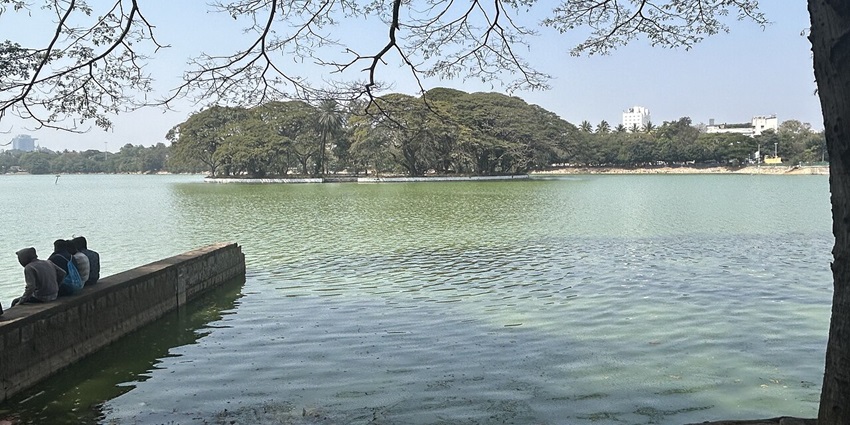
Photo: Harvinder Chandigarh / Wikimedia Commons
Ulsoor Lake, or Halasuru Lake, is one of the oldest and famous lakes in Bangalore, covering an area of about 50 hectares. This peaceful body of water dates back to the era of Kempe Gowda II, founder of Bangalore. The lake is known for its verdant foliage, calm water, and many small islands that dot its surface. It is a lovely respite from the city’s hustle and bustle, luring joggers, bird watchers and boaters. The well-kept pathways along the lake are best experienced in early morning walks. Even amid urban development, Ulsoor Lake remains an oasis and a centre of spirituality and leisure activities.
Location: Ulsoor, near MG Road
Activities: Pedal boating, row boating, bird watching
Timings: 5 AM – 7:30 PM
2. Sankey Tank
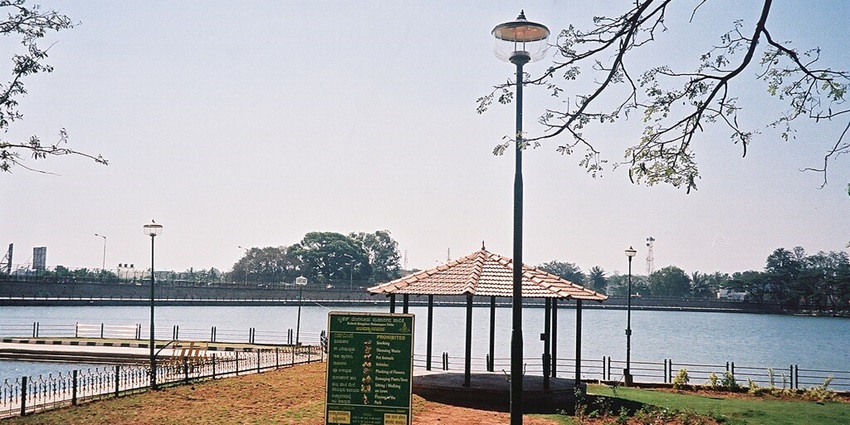
Photo: Nvvchar / Wikimedia Commons
Sankey Tank is an artificial lake in Malleshwaram, which was built in 1882 by Col. Richard Sankey to cater to the water requirements of the city. Occupying 37 acres, the tank is a testament to Bangalore’s colonial engineering prowess. Hugged on all sides by an emerald promenade and alive with joggers and cyclists, the lake is breathtaking for its biodiversity. Here, native species such as painted storks, purple moorhens and brahminy kites can be seen. There is also a boating club that does paddle boats against the backdrop of some beautiful sunsets. The neighbouring Malleshwaram market buzzes, a contrast of nature and urbanity.
Location: Malleshwaram, Sadashivanagar
Activities: Paddle boating, jogging, bird photography
Timings: 6 AM – 8 PM
3. Hebbal Lake
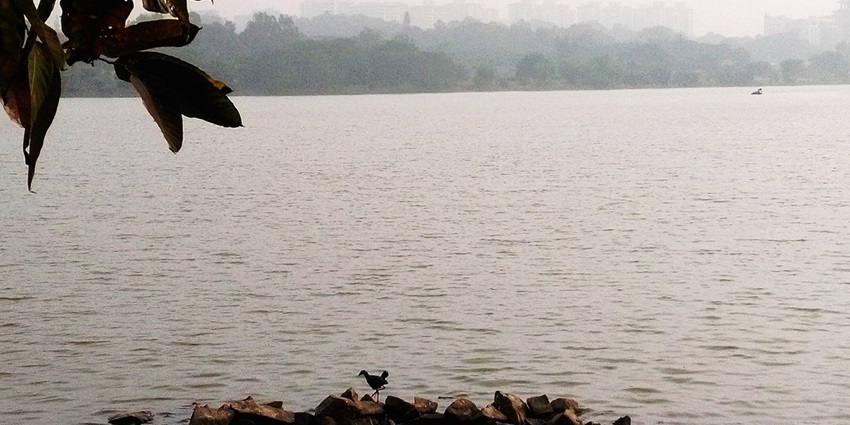
Photo: Shruti.morabad / Wikimedia Commons
Established by Kempe Gowda I during the sixteenth century, Hebbal Lake is a large 150-acre waterbody. This is the home to dynamic birdlife and a laid-back environment. A haven for ornithologists, it houses more than 70 species of birds, including the spot-billed pelican, open-billed stork and marsh harrier. On the northern bank of the lake, a walking trail lined with flowering trees is perfect for early-morning walkers as well as photographers. Nestled close to the busy Hebbal Flyover, you can see a unique contrast of greenery and building structures. The boating facilities here are modest and you can paddle in 12 miles of canals and bays.
Location: Hebbal, near Outer Ring Road
Best Time To Visit: November to February for migratory birds
Nearby Attractions: Hebbal Biological Park, Manyata Tech Park
Timings: 6 AM – 6 PM
4. Madiwala Lake
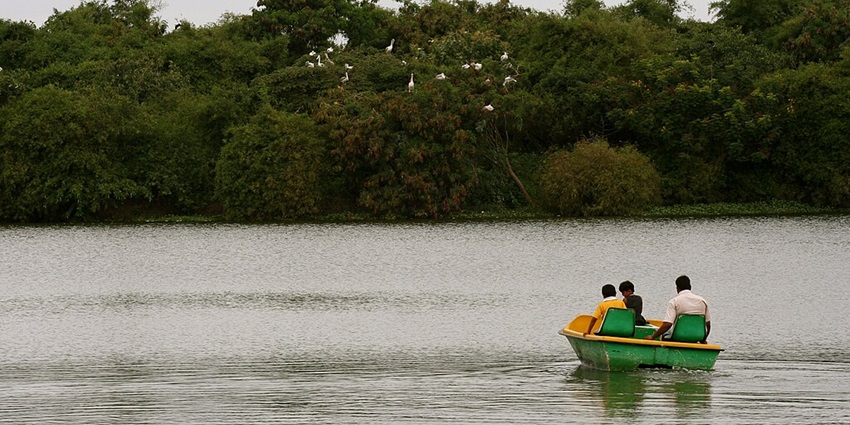
Photo: Kandukuru Nagarjun / Wikimedia Commons
Madiwala Lake is one of the largest and famous lakes in Bangalore, covering more than 270 acres. The lake is believed to have been constructed during the Chola dynasty and is home to a wealth of history and biodiversity. Madiwala is the site of migratory birds during winter that are concentrated in the area. Spot-billed pelicans, purple herons and Eurasian coots congregate here, making the lake a place for bird-watching. Madiwala’s waters are comparatively unspoiled, due in part to the community-led conservation joint initiatives. The lake also includes access to a well-maintained children’s park and boating area.
Location: BTM Layout
Best Time To Visit: October to March for bird sightings
Nearby Attractions: BTM Park, Silk Board Junction
Timings: 5 AM – 7 PM
5. Kaikondrahalli Lake
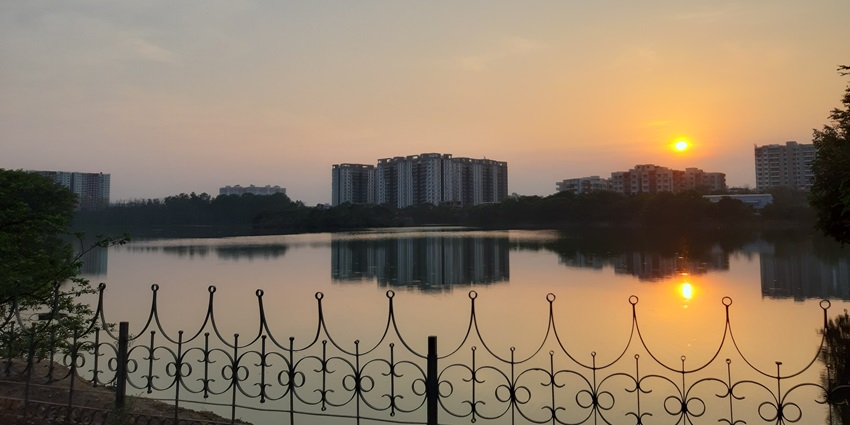
Photo: Sharanya ravii / Wikimedia Commons
Kaikondrahalli Lake is now an urban biodiversity hotspot spread over 48 acres, a neglected waterbody transformed. The lake’s ecosystem is managed by citizen groups and BBMP. It attracts more than 50 species of birds, including painted storks, Brahminy kites and pied kingfishers. Its curated walking path, lined with native plants, is popular for joggers. Kaikondrahalli’s ecological engineering has no concrete embankments, allowing natural percolation. It also has a floating wetland that helps to filter and improve the lake’s water quality naturally. It usually has environmental workshops, making it more than a lake but a community space for sustainability.
Location: Sarjapur Road
Timings: 5 AM – 9 AM, 4 PM – 7 PM
6. Agara Lake
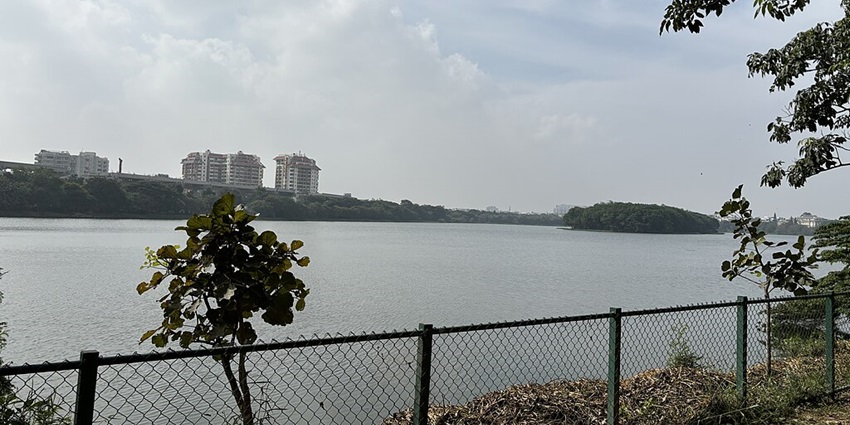
Photo: Goyaldevender / Wikimedia Commons
One of the famous lakes in Bangalore, surrounded by a sprawling 98 acres, is Agara Lake. Originally an ancient irrigation tank, it was neglected but has been given a transformation and has turned into a vibrant ecosystem. Islands dot its wide expanse, serving as bird-nesting grounds and attracting species ranging from Indian spot-billed ducks to grey herons to black-winged stilts. Agara Lake is unique in that it is both a fitness hub, with jogging tracks, and an ecological sanctuary with native vegetation growing freely. The lake’s most interesting attraction is a unique butterfly park with many endemic butterfly species.
Location: HSR Layout
Nearby Attractions: HSR Club, Outer Ring Road
Timings: 5:30 AM – 7 PM
7. Lalbagh Lake
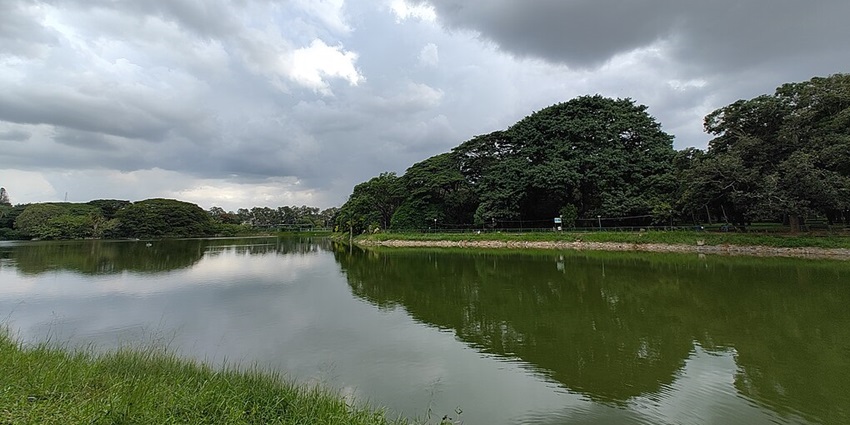
Photo: KeralianEditor / Wikimedia Commons
Tucked away in the heart of the famous Lalbagh Botanical Garden, Lalbagh Lake is a tranquil 40-acre waterbody. It is surrounded by greenery and a variety of exotic plant species. The lake, which dates back to the 18th century, was part of a larger horticultural vision of Hyder Ali and Tipu Sultan. Lalbagh Lake is special due to its unusual landscape, alternating manicured gardens and rugged rocky outcrops. It is a nexus for migratory birds, including darters, Eurasian spoonbills and cormorants. With a bonsai garden and glasshouse alongside, it is a wholesome experience for nature lovers and anyone interested in botany.
Location: Lalbagh Botanical Garden
Timings: 6 AM – 7 PM
Entry Fee: ₹25 for adults, ₹10 for children
8. Kengeri Lake
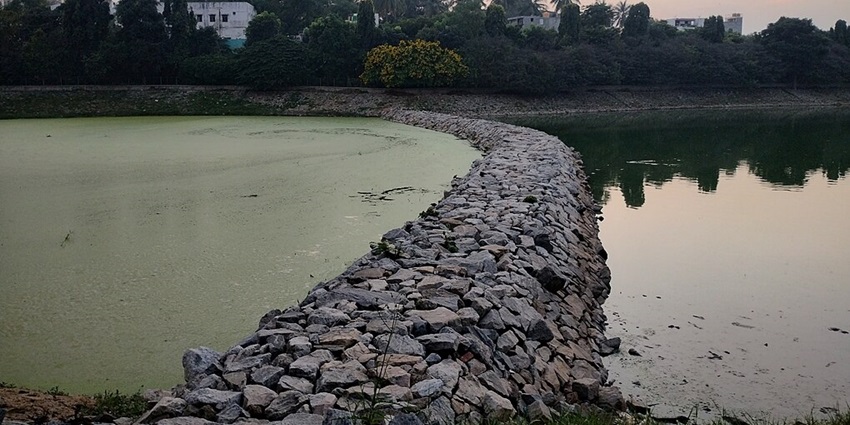
Photo: Gpkp / Wikimedia Commons / Image For Representation Only
Located on the outskirts of Bangalore, Kengeri Lake is a little-known tourist spot that stretches up to 25 acres. Kengeri was famous for its coconut farms, and the lake fulfilled the purpose of irrigation backed up by a natural water supply. Today, it is a quiet oasis away from the city’s bustle. Common kingfishers, white-breasted waterhens, and hard-to-spot birds, the Indian pond heron, make their homes along the lake. Its narrow, winding pathways lend themselves to solitary strolls, often accompanied by the soft rustle of coconut palms. Here, fishermen still use traditional bamboo fishing rods, a sight that harks back to old Bangalore.
Location: Kengeri
Timings: 6 AM – 6:30 PM
Nearby Attractions: Rajarajeshwari Temple, Kengeri Satellite Town
9. Puttenahalli Lake
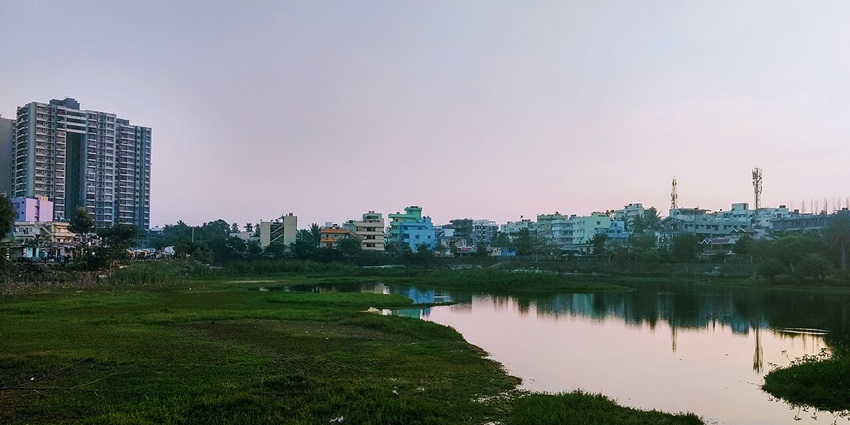
Photo: SlowPhoton / Wikimedia Commons
Puttenahalli Lake is a testament to conservation efforts led by the community. Covering an area of 13 acres, this lake came close to being wiped off the map due to encroachments and pollution. Through relentless efforts by residents, it has been rehabilitated into a healthy ecosystem. Among other famous lakes in Bangalore, Puttenahalli is special for its abundance of biodiversity in a relatively small space. More than 90 species of birds have been recorded here, including black-crowned night herons, Indian pond herons and grey-headed swamphens. Benches made from recycled materials line the edge of the lake, a testament to the community’s commitment to building with sustainable principles. Also, there’s a ‘silent zone’ stretch to not disturb the birdlife.
Location: JP Nagar 7th Phase
Nearby Attractions: Brigade Millenium Complex, Sarakki Signal Market
Timings: 6 AM – 9 AM, 4 PM – 6:30 PM
10. Varthur Lake
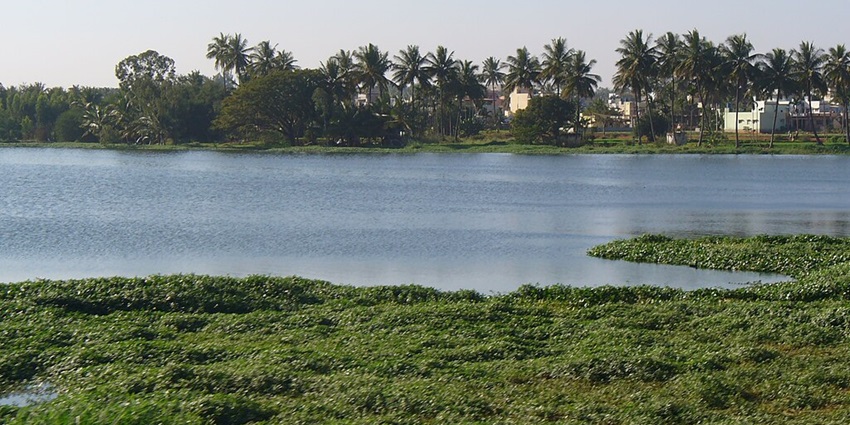
Photo: Gaurav Vaidya / Wikimedia Commons
Varthur Lake, at 445 acres, is one of Bangalore’s largest lakes and is located in the eastern suburb of Varthur. It used to be an important irrigation source for nearby farmlands, particularly paddy fields. While urbanisation is a challenge today, Varthur Lake remains ecologically significant. It is an expanse that attracts sizable flocks of birds like spot-billed pelicans, black-winged stilts, and whiskered terns. One of the unique features of Varthur Lake is its floating hyacinths, which, although invasive, serve as cover for aquatic birds. Local artists flock to the lake’s southern edge to paint its panoramic beauty for sale at markets nearby.
Location: Varthur, Whitefield
Nearby Attractions: Forum Shantiniketan Mall, Whitefield IT Hub
The famous lakes in Bangalore are not merely water bodies. They also serve as living monuments to the city’s history and its persistent resolve to safeguard nature in the face of constant urbanisation. Each lake has a story to tell, from historical importance to contemporary renewal. Visiting these lakes is a mix of peace and learning, which makes them suited for either weekend excursions or daily visits. So plan your visit with TripXL and enjoy their beauty and biodiversity for years to come.
Cover Photo: Photo: Gpkp / Wikimedia Commons


 WhatsApp
WhatsApp
 Twitter
Twitter









